Cost of Raising Chickens for Meat on a Small Scale
We just finished raising another round of meat chickens on our homestead and we often get asked, “Is it worth it?” What’s the cost of raising chickens for meat on a homestead scale? Here’s a breakdown of our annual costs, our one-time costs, and what we would earn per chicken.
Our Starting Point – What is the value of the chickens we raised?
In previous years we raised two separate batches of meat chickens (or broilers). This year we built a second chicken tractor and raised a full year’s supply of meat chickens all in one batch – so much more efficient!
In all, 64 of our Freedom Ranger meat chickens made it into the freezer. They were mostly between 4 – 6 lbs. with an average weight of roughly 4.7 lbs. They were fed an organic, non-gmo feed.
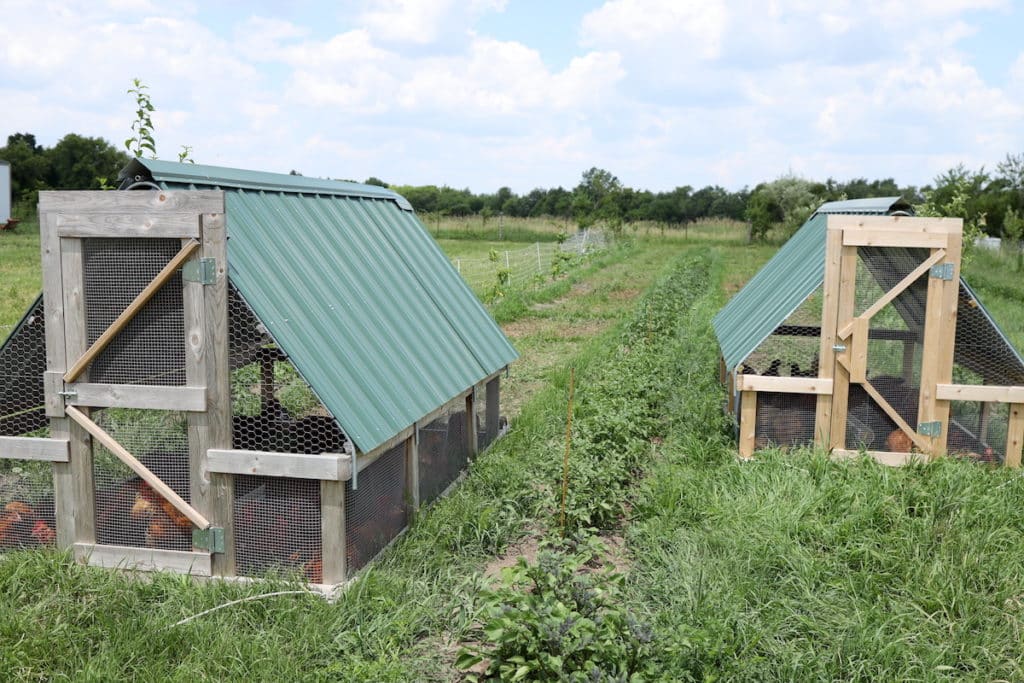
Freedom Rangers take 11-12 weeks on average to get to weight versus the 7-8 weeks it takes for Cornish Cross. You can read more about why we choose Freedom Rangers for our homestead in our post – Cornish Cross Vs. Freedom Ranger Chickens.
The cost to buy organic, pasture raised chickens in our area is $5/lb. Some areas this will be less, some areas it will be more.
So, 64 birds at 4.7 lbs. comes to roughly 300 lbs. of meat. That multiplied by $5/lb. gives our meat a value of $1,500.
Therefore, our earning potential is $1,500. Now what does it cost to raise meat chickens?
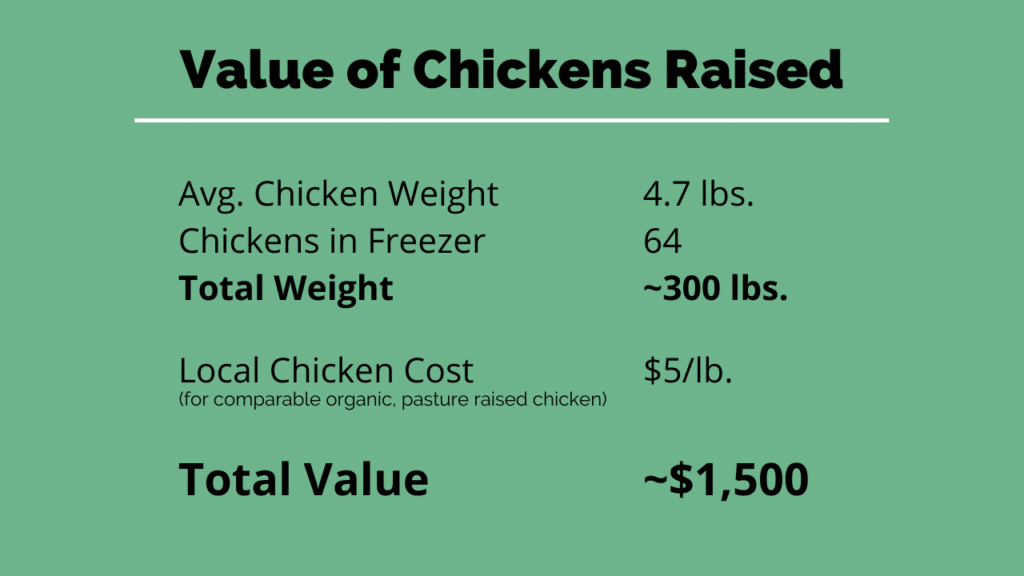
Breaking Down The Cost of Raising Chickens For Meat
We live on a 5-acre homestead in a semi-rural area on the outskirts of a major metropolitan area. Keep in mind the following costs could vary significantly based on your location and what options are available.
Chicks
We purchased 60 Freedom Ranger chicks from our local feed store who gets delivers from a nearby hatchery. The cost of each chick was $2.15 for a total of $130. The hatchery typically will send one or two extra, but this time we got about 10! We lost a few as chicks and one died full grown, which is how we ended up with 64 in the end.

Feed
Feed is going to be your most significant cost when raising chickens for meat. You can expect each meat chicken to consume between 16-20 lbs. of feed going from chick to butcher weight.
Chickens being raised for meat typically start out on a feed with a protein ratio of 22% for their first couple weeks of life. After, they switch to a protein content of around 18%. Feed quality and cost can vary greatly. We were thankful to have found a source of high quality, organic feed that we could get at a bulk rate. This saved us quite a bit from purchasing individual bags.
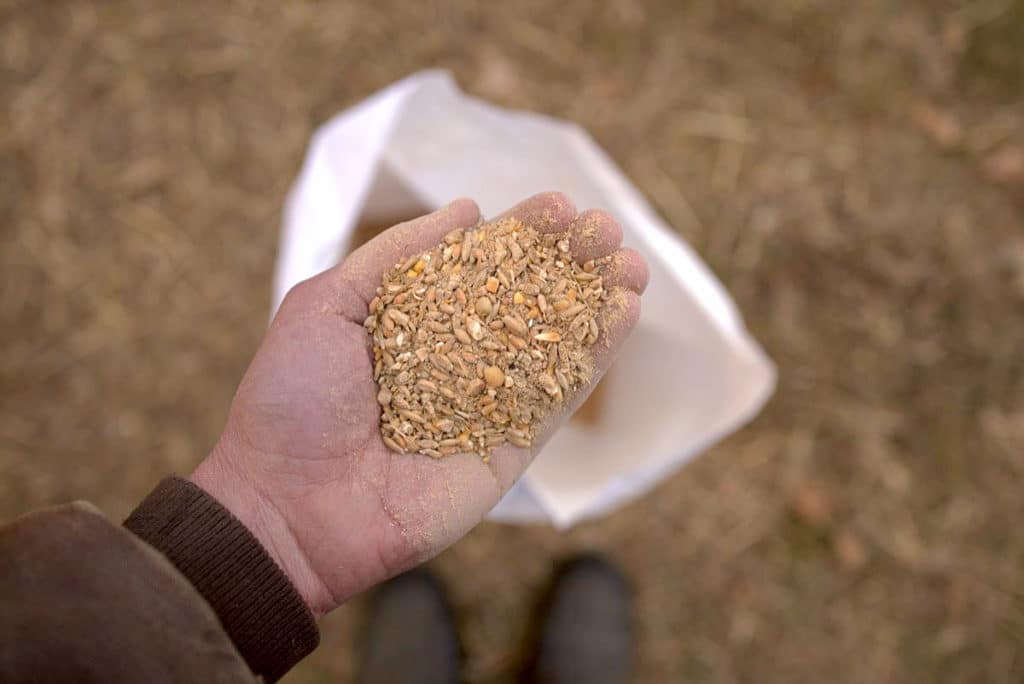
We estimated that our chickens consumed roughly 1,250 lbs. of feed over 12 weeks. That meant each of our 65 birds (we counted one that died as an adult) consumed 19.2 lbs. of feed, which is at the high end of that range mentioned above. The total feed cost came out to $520.
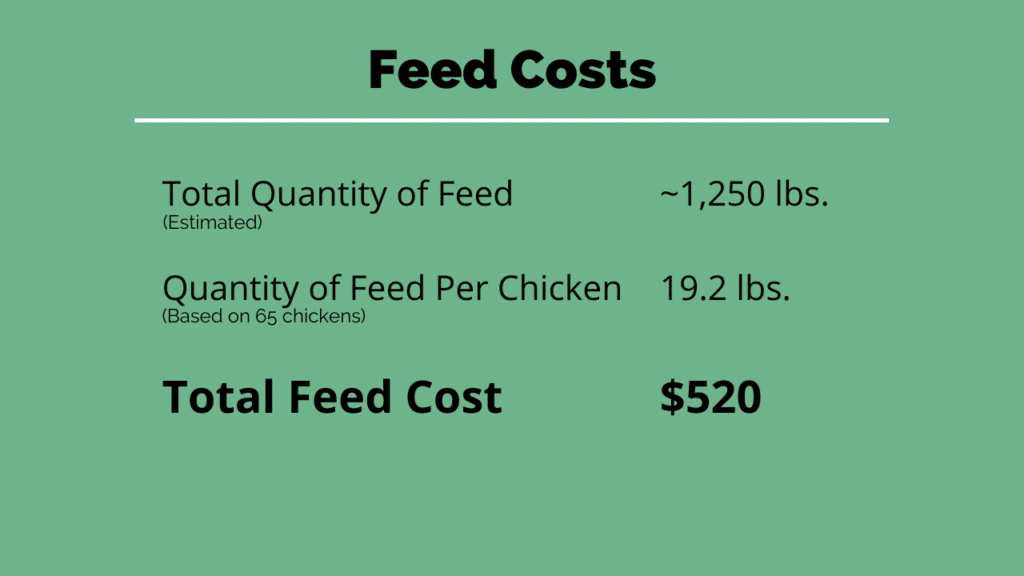
Processing Costs
Processing has a few different options with varying costs. If you are processing yourself, what equipment do you need to borrow, rent or purchase? If you are taking them somewhere to be processed, are you simply getting whole chickens or do you want more expensive cuts or blends?
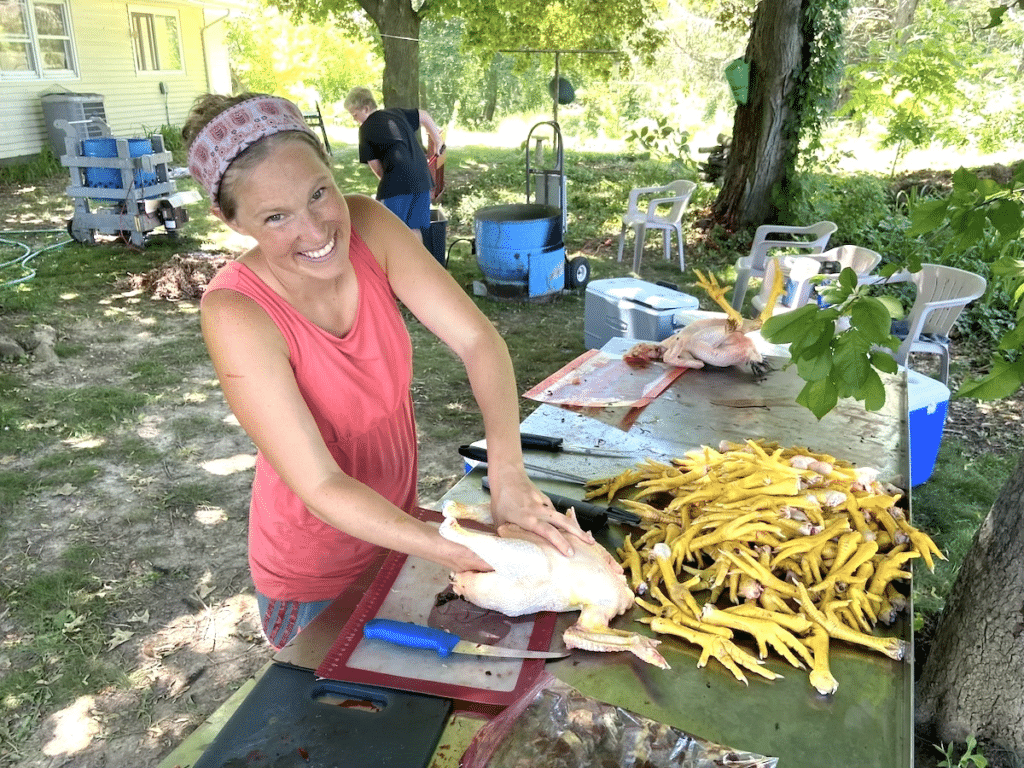
We butchered at home, all as whole chickens. Here’s what we spent for home processing:
Chicken Bags ($55) – Poultry shrink bags work great. These are the bags we use. If you’re raising meat for the full year, like we are, this is our preferred route to go to keep meat fresh longer.
Propane Tank ($20) – We used a scalder for defeathering and a turkey fryer for the shrink wrap bags. This required a full tank of propane.
Help ($150) – We processed on a weekday and didn’t have much help available. So, we hired 3 neighbor boys to help out. Obviously, this cost could have been avoided if circumstances were different and we had volunteer help lined up. But even if we had family or friends helping, we probably would have been paying them in fresh processed chickens!
So, our total processing costs came to $225, or about $3.50 per bird.
Some of the above links are affiliate links. This means we earn a small commission on qualifying purchases at no cost to you. We are so appreciative of your support!
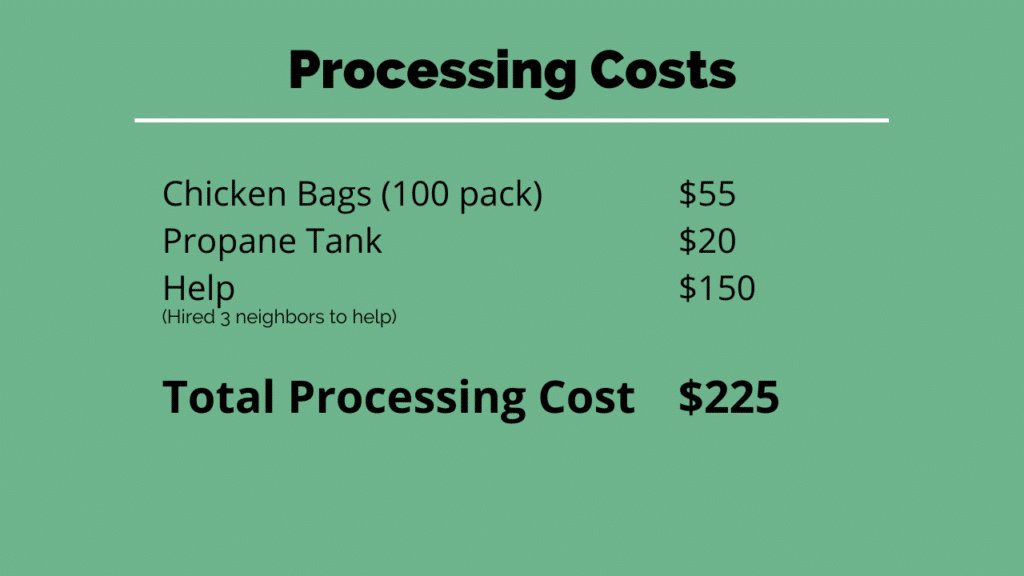
We did find out from a farmer friend that they pay only $4.50 per bird at a local processing facility. That was a bulk rate they received, so we may pay slightly higher for our smaller batch. But regardless, at only $1 more per chicken, this is an option we will look closer at next year – especially since our kids are not at an age yet where they can really help out.
Raising Meat Chickens – Cost Analysis
If we were to go out and purchase a 4.7 lb. pasture raised chicken from a local farm at $5.00/lb. we’d spend $23.50.
As you can see form the breakdown below, raising that same chicken costs us $13.70.
In the end we save about $10 per chicken OR we make $10 per chicken that we sell.

As a homestead, raising the meat primarily for our own consumption, these are numbers that we’re happy with. We have the satisfaction of knowing exactly how our chickens were raised, involving our whole family in the process, and connecting to our food.
We are also able to benefit from the nutrients the chicken’s cycle back into our soils to help grow other foods our family lives on, which you can read more about in our post – Quarter Acre Self Sufficient Homestead Garden.
One-Time Costs for Meat Chickens
Above, we broke down our annual costs to raise a batch of meat chickens. There are other one-time costs to get going that we did not figure in. These costs can be significant. But as a homestead, our focus is not profit; it’s nourishing our family with the best foods possible. Plus, some of these items serve other functions on the homestead – like our brooder that is shared with our laying flock.
Farms often will divide these one-time costs over a period of time – say 5-15 years – and apply a portion of those costs to their annual balance sheet.
Whatever approach you take, here are the one-time costs you might incur raising meat chickens.
Brooder
You’ll need a brooder to grow your chicks in their first several weeks of life. They don’t need to be complex or expensive. Our post, Simple Outdoor Chicken Brooder Ideas, breaks down our setup using mostly repurposed materials and gives other low-cost options.
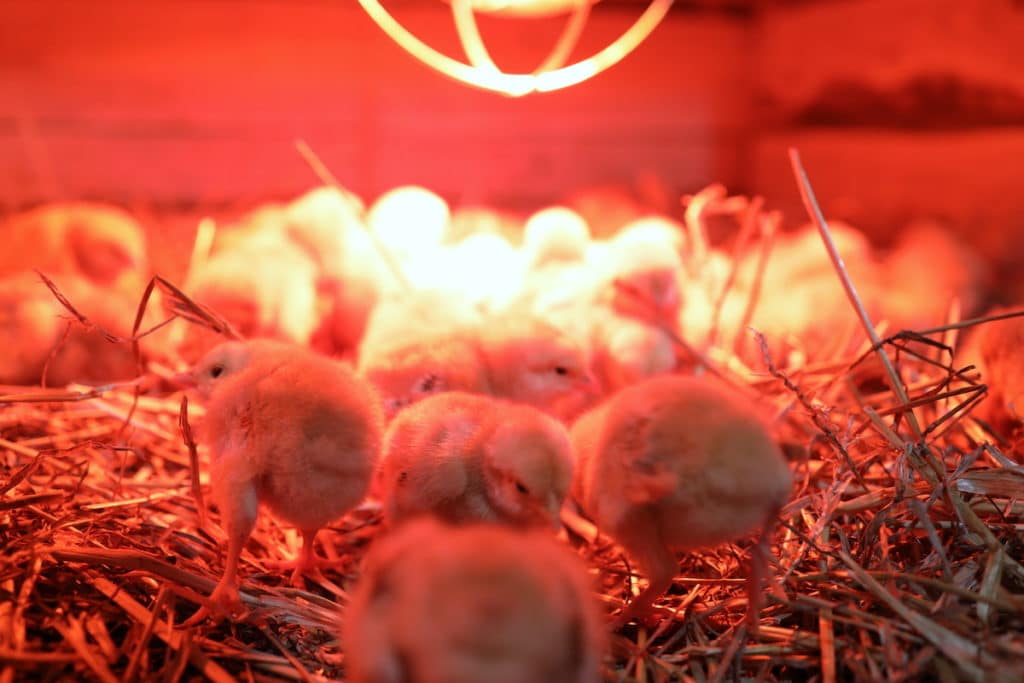
Shelter
Your chickens will need a coop or chicken tractor for protection from the elements and predators. We built a Suscovich Chicken Tractor, which has worked out great and will last a long time. The tractor itself cost about $350 to build, and installing a metal roof on it added another $250, so $600 total.
Feeder/Waterer
Providing food and water access for your chickens is a must. We use this waterer that hangs in our chicken tractor. But you can also build them out of 5 gallon buckets. Feeders can also be inexpensive. We built a feed trough out of a PVC pipe as laid out in John Suscovich’s chicken tractor plans book.

Fencing
Some chicken growers prefer poultry fencing to keep chickens in and predators out. We use a simple poultry netting system from Premier 1 with a solar fence energizer. Again, this is an expense we use elsewhere on the farm as we also use to protect our gardens or rotationally graze our cows.
Processing Equipment
Processing does require a fair amount of equipment – a scalder and plucker being the most costly. We were fortunate to be able to borrow these from neighbors. However, renting or purchasing this equipment is something you may need to consider if you don’t have access to it. We share a lot more about our processing setup, what you’ll need, and what we’ve learned in our post, Beginners Guide to Processing Chickens at Home. It’s totally doable!
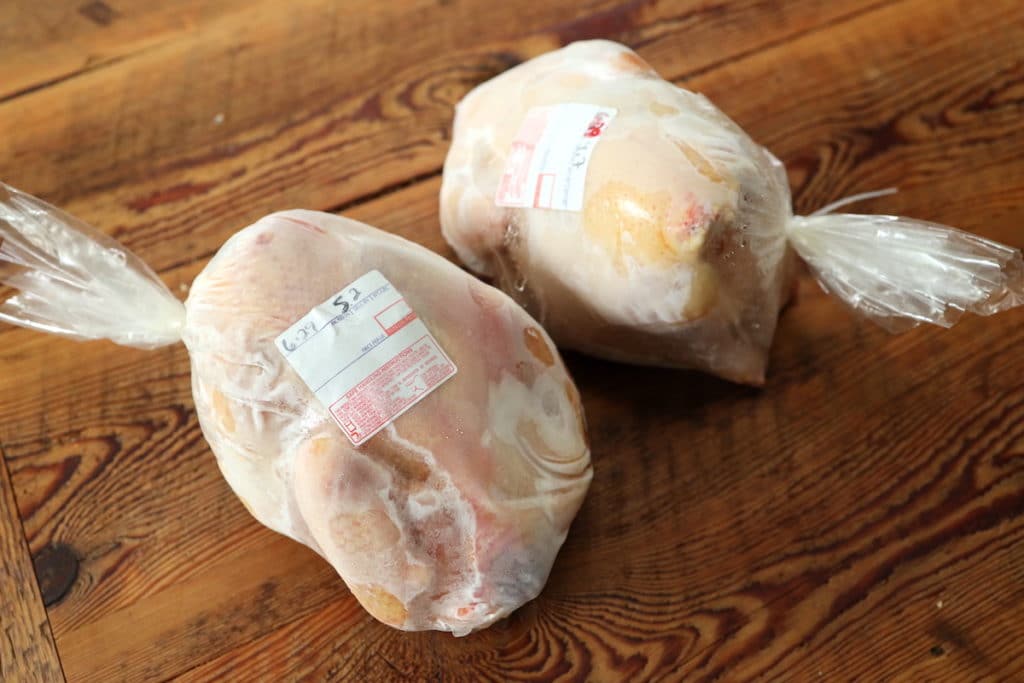
Freezers
You may also need to acquire additional freezer space if you don’t have room for the chickens you are raising. Again, this does not need to be a significant cost. We just purchased a small chest freezer used off Facebook Marketplace for $75.
Cost Aside, Meat Chickens Are a Great Starting Point
If you’re looking to add greater self sufficiency to your life, raising chickens for meat is a great way to grow your own source of protein. They require minimal space, equipment, and infrastructure, and you can fill your freezer in just a couple months!
What’s been your experience? Are our costs in line with what you’ve seen? Or what questions do you have about raising chickens? We’d love to connect in the comments below!
If you are looking to start raising your own chickens for meat, check out these helpful posts:

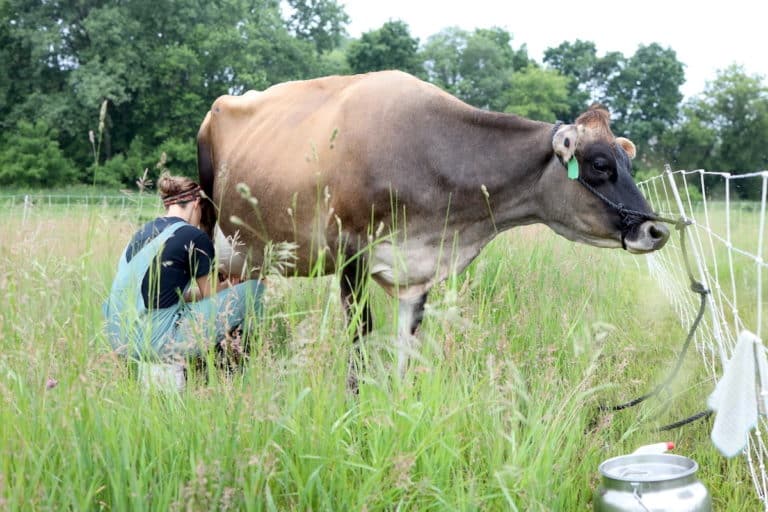
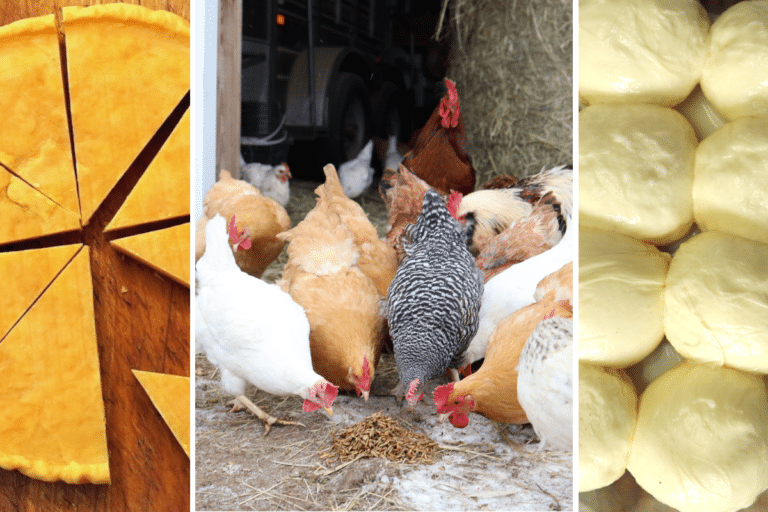

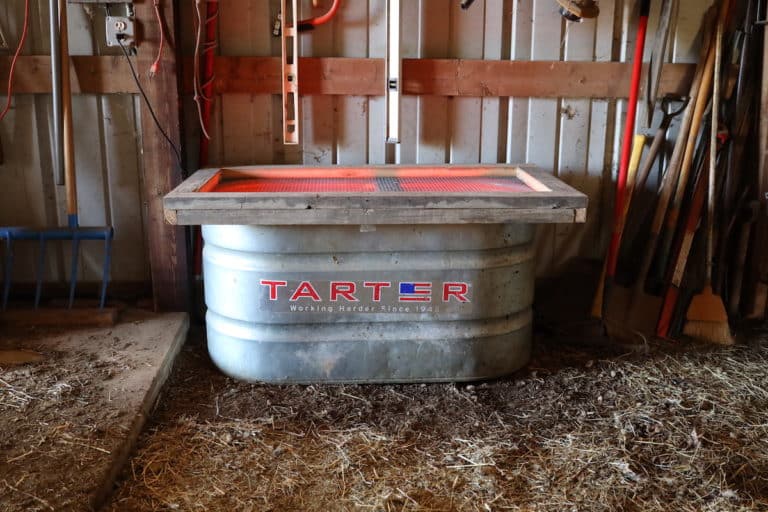

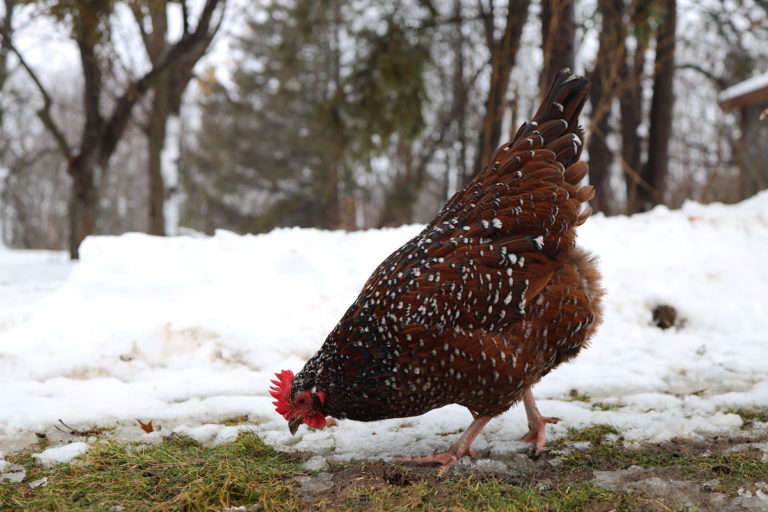
Such great info! I don’t think we’re ready to venture into butchering chickens yet, but I love learning about this in case we ever have a homestead.
We hear you! There were multiple times when we were in the suburbs where we brought our older hens or roosters to other farms because we just couldn’t butcher them ourselves. Volunteering at a chicken processing day at another farm is what really helped us push past it all and you can just ease your way in with what you feel comfortable doing. It’s a whole new world when you’re not used to it. Thanks for stopping by!
Hey, gmos arnt bad, we learned about this in Agraculture class, you can call me and we can discuss this if you want!
Appreciate the comment. I think a lot of it depends on what your baseline of “bad” is. Even if we can’t agree on the health implications I don’t think patenting nature is a good thing. Taking what’s been freely given to us and transferring that power to the control of mega corporations that only care about profit sounds like a bad idea to me.
…….and to many others of us!
Sorry Luke …… but saying that you learnt about GMOs in Ag class does not mean you KNOW about gmos it just means you swallowed some propaganda.
You briefly touched on predator protection. Were you using an electric fence? Your outdoor shelters with chicken wire don’t seem touch enough for foxes/racoons/ferrets/weasels/ etc….
I’m planning to start some meat birds this spring. Any input appreciated.
We do run electro-netting around the perimeter of where we raise the meat chickens. Nothing has ever gotten to them with that. I’m not sure a ground predator would be able to get through the tractor, but nothing is preventing them from digging under which is the big issue. The tractor keeps them protected form aerial predators and then the electric fencing does the trick for anything on the ground. We also just did a post on predator proofing chicken coops which might have some more helpful tips: http://fromscratchfarmstead.com/predator-proof-chicken-coop/. That’s so great that you’re planning on starting up meat birds in the spring! It’s such a rewarding process. All the best!
We skinned our meat birds last year and plan on doing that again this year. You only need a knife and the skin comes off pretty easy. When you bake or cook in crock pot you season the meat and not the skin that my family doesn’t eat anyway.
Thanks for sharing! I bet that would make the processing go much quicker and lessen the step and equipment needed. Although, the skin is the most prized part of the bird that everyone fights for around our table, so I’m not sure how well that would go over here 🙂
curious where you buy your feed from if your able to share that info? we live up in Sheboygan county, looking for a good place for organic feed. Thanks!
Hey! Click the email icon on our website and shoot us a message. I’d be happy to share with you there!